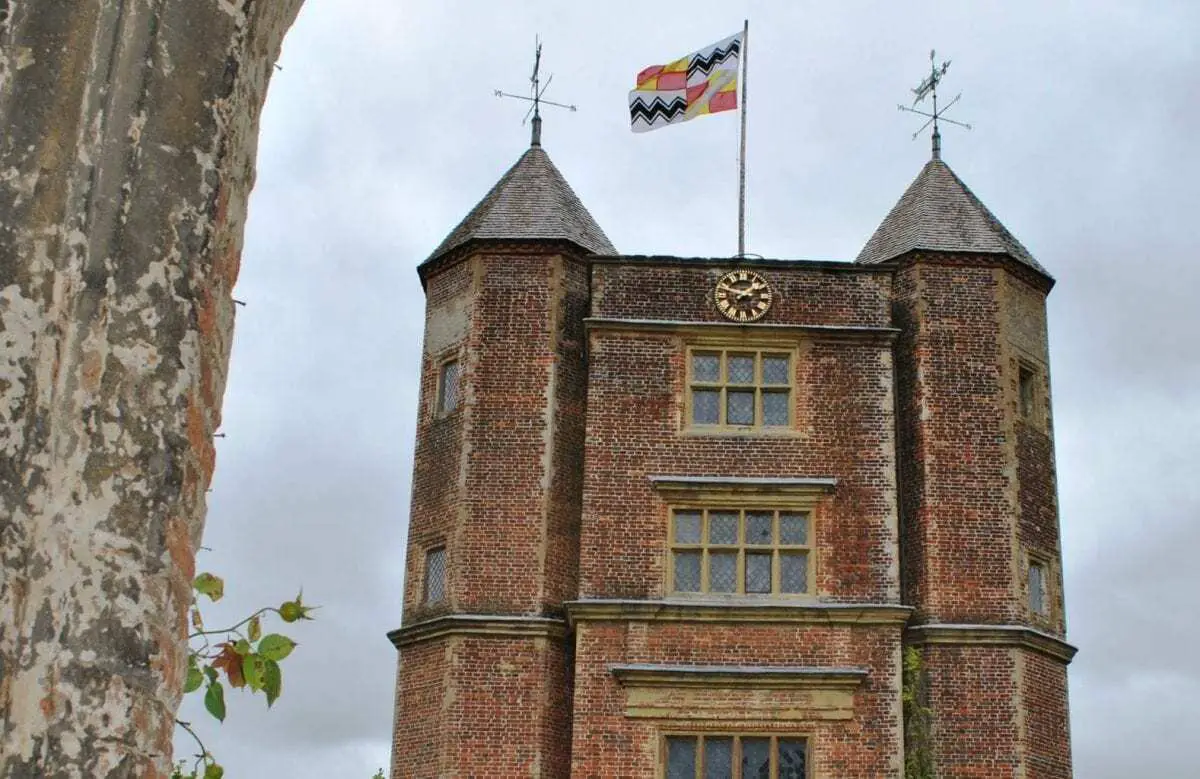Long lost graffiti carved into the walls by French prisoners of war over 250 years ago has been discovered at a National Trust property in Kent.
The discovery was made at Sissinghurst Castle during five months of work to repair the Elizabethan tower at the property. To enable the conservation work, the entire contents of the tower were removed, leading archaeologists from the conservation charity and Museum of London Archaeology (MOLA) to examine the walls in greater detail and discover graffiti left by POWs 250 years ago.
As many as 3,000 men were incarcerated at Sissinghurst in the early 1760s after the country house was leased to the government by the then owner, Sir Horace Mann, for use as a prison during the Seven Years War (1756-1763).
Prisoners lived in appalling conditions. Even by the standards of eighteenth-century military prisons, it was considered to be one of the worst in the country. A painting of Sissinghurst from the time, thought to have been by an inmate, depicts fellow prisoners being shot and bayonet by their English guards.
The collection of drawings left by the prisoners of war inside the tower depicts a number of coastal shipping vessels in full sail, as well as two etchings of larger vessels found on the ground floor. There are also names thought to be of prisoners held at Sissinghurst.
In total, 18 previously unknown drawings were found by the archaeologists surveying the tower, and it is believed that many more may have been lost over the years due to the fragile nature of the surface on which they were originally drawn.
This is not the first time that inscriptions left by the French prisoners have been found. In the 1930s, when writer Vita Sackville-West and her diplomat husband, Harold Nicolson, bought Sissinghurst, they set about a decades-long renovation project. In the tower, the couple preserved some areas that had historic graffiti, but in others they applied plasterwork that obscured and covered the graffiti, until now.
Nathalie Cohen, National Trust, archaeologist, says: “We knew that some French prisoners of war had been held at Sissinghurst and that they had left some marks behind in the tower. However, these new discoveries add a huge amount to our understanding of this period in Sissinghurst’s history, and confirm that there were in fact a huge number of men held here in the 1760s.”
Many of the prisoners wrote letters home, but these were regularly seized by the British for intelligence purposes. From these letters, now held at the National Archives, we know that prisoners would often refer to Sissinghurst as ‘Chateau de Sissinghurst’. This name stuck and it is thanks to these imprisoned seamen that the house is now called Sissinghurst Castle.
Nathalie continues: “It would have been a brutal existence for those unfortunate enough to find themselves here. The drawings of ships on the walls could well have been the work of prisoners dreaming of the open seas – and a journey home. A stay at ‘the castle’ was certainly not one for the fainthearted.”
Header Image Credit: Elisa Rolle





